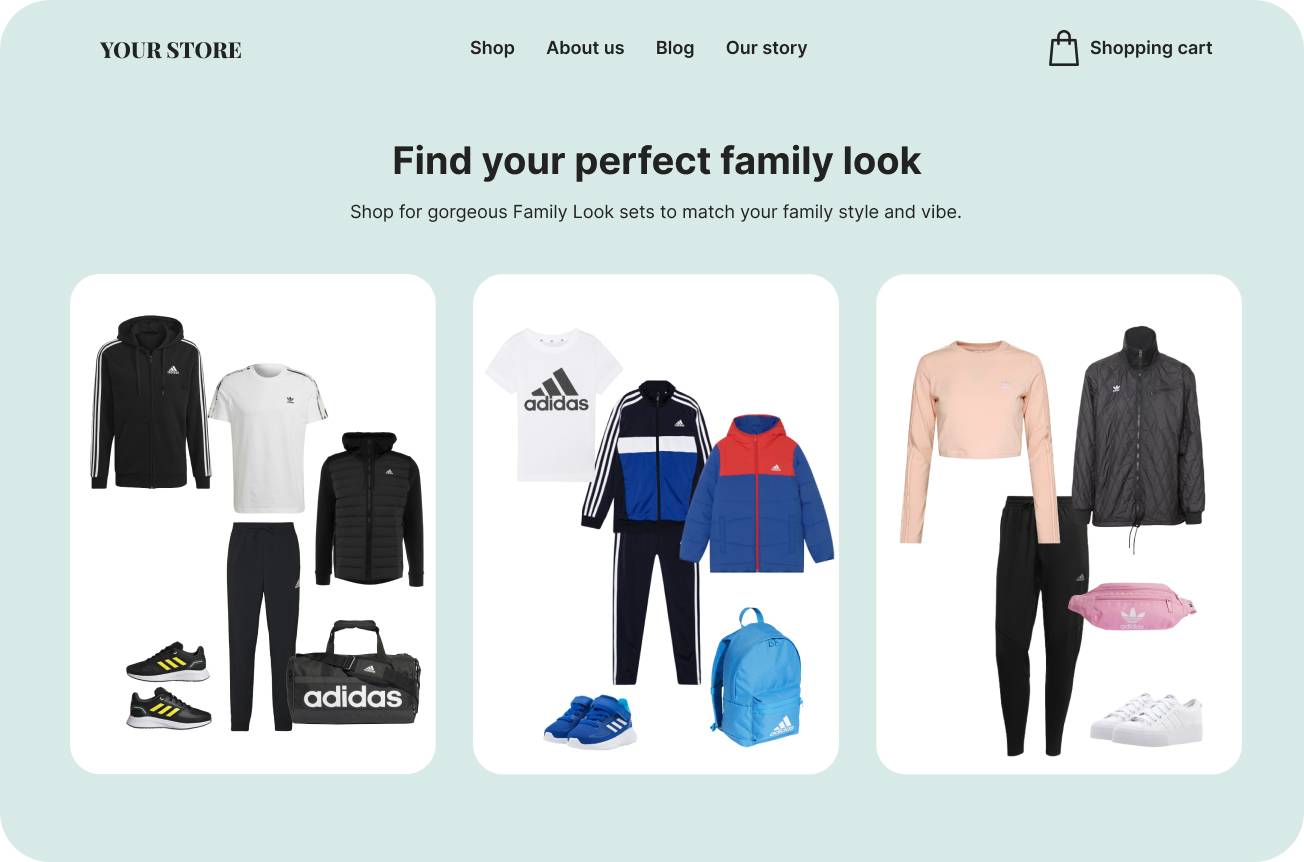The key to boosting eCommerce sales significantly doesn't involve costly marketing campaigns or collaborating with popular TikTok influencers. Instead, the focus should be on addressing the issue of shopping cart abandonment.
Research conducted by Forrester indicates that a staggering $18 billion in annual sales revenue is lost due to digital shopping cart abandonment. To provide context, the Baymard Research Institute estimates that the average cart abandonment rate in 2023 will be around 69.99% (and 85% for mobile). This means that nearly seven out of 10 shoppers leave a website before completing a purchase.
This situation presents a major challenge for eCommerce businesses. Despite successfully attracting and engaging shoppers, a significant portion of them abandon their carts just before making a purchase. However, there's hope! Various strategies and tactics can be employed to minimize this cart abandonment rate, including those from technology providers like GardeRobo AI, who can decrease the cart abandonment rate by 10%. In this article, we will explore what shopping cart abandonment entails, why it's crucial, and how businesses can prevent it from happening.
What Leads to Cart Abandonment in Online Shopping?
Shopping cart abandonment in online retail is influenced by a multitude of factors, each contributing to a potential loss of sales. One of the common issues is the presence of unexpected costs or fees that are added during the checkout process. Customers might find an item's price acceptable, but when additional expenses such as shipping, taxes, or fees are revealed at checkout, it can deter them from completing the purchase.
Another hurdle is the requirement to create an account to finalize a transaction. While creating an account offers benefits like personalized recommendations and saved payment details, the process can create friction, particularly for customers seeking a quick and hassle-free checkout experience.

A lengthy or complicated checkout process is another barrier to completion. Just like filling out a tedious form at a doctor's office, a multi-step checkout with numerous fields and clicks can lead to frustration. If the process feels overly complex, customers may abandon their carts, feeling the effort outweighs the item's value.
Payment security concerns also play a significant role. Despite the growing popularity of online shopping, many customers remain wary of entering their credit card information due to past security breaches. If a website doesn't appear completely secure, customers may lose trust and abandon their purchases.
Additionally, an unsatisfactory return policy can dissuade shoppers from making a purchase. Without the option of a full refund, customers might hesitate to buy items, fearing they won't be able to return or exchange them if they are dissatisfied.
The variety of payment methods offered is crucial as well. While credit cards were once the standard, customers now expect more options, such as PayPal, Google Pay, or cryptocurrency. Failing to provide convenient and secure payment methods might lead customers to explore other retailers that offer these options. Furthermore, technical issues like website errors or slow load times can severely impact the shopping experience. Customers, fearing double charges or frustrated by a sluggish site, may choose to abandon their carts rather than risking a problematic transaction. All these factors highlight the complexity of online shopping cart abandonment and emphasize the need for retailers to address these issues to enhance customer satisfaction and boost sales.
How to Decrease Shopping Cart Abandonment: 8 Effective Tactics
After understanding the reasons behind digital shopping cart abandonment, let's explore eight proven strategies to reduce it effectively.
- Enhance Mobile Checkout Experience
Given the increasing number of mobile users, focusing on a seamless mobile checkout process is crucial. Simplify the checkout flow on smaller screens, emphasizing simplicity and speed. Ask yourself questions like whether the checkout process has too many small fields, if there are excessive pages with slow load times, and if shoppers can easily view and edit their carts.
- Minimize Complexity and Clicks
Streamline the checkout process by including only essential fields. Avoid mandatory feedback or newsletter subscriptions before payment completion. Offer guest checkout options for users in a hurry and avoid distracting shoppers with unrelated product recommendations.

- Build Trust
Establishing trust is vital. Ensure your technical infrastructure complies with payment security standards and include recognizable payment security symbols on the checkout page. Utilize social proof through customer reviews and ratings to validate your brand.
- Consider Diverse Payment Methods
Provide various payment options, including digital wallets like PayPal, Venmo, and Apple Pay, as well as emerging options like cryptocurrency and Buy Now, Pay Later (BNPL) services. Offering these alternatives not only caters to customer preferences but can also boost the Average Order Value (AOV).
- Clearly Present Pertinent Information
Avoid surprising shoppers at checkout with unexpected costs or policies. Clarify shipping costs, delays, and return policies upfront. Provide estimated shipping fees based on the shopper's location, and publish return or exchange policies on Product Description Pages (PDPs) to set clear expectations.
- Prioritize Quality Assurance
Frequent quality assurance and usability testing are essential. Regularly test new features, inventory updates, and checkout flow changes to ensure a smooth user experience. Address bugs and glitches promptly to maintain a seamless shopping journey.
- Display Cart Total Clearly
Show shoppers their cart total with every addition to prevent surprises at checkout. Transparency about the accumulating costs can prevent shoppers from abandoning their carts due to unexpected expenses.
- Follow Up with Abandoners
Implement retargeting strategies such as ads and emails to reconnect with cart abandoners. Remind them of the products left behind and encourage them to complete the purchase. Research indicates that retargeting efforts can significantly reduce cart abandonment rates and boost online sales.
Reducing digital shopping cart abandonment requires a comprehensive approach. By addressing factors like mobile experience, simplicity, trust, payment options, information clarity, quality assurance, transparency, and follow-up, businesses can minimize abandonment rates and enhance customer satisfaction. While external marketing efforts are valuable, converting existing site visitors at the end of their customer journey can have a substantial impact on sales and brand loyalty.
How can the practice of purchasing total outfits impact the issue of abandoned shopping carts
Another effective strategy to reduce shopping cart abandonment is to provide customers with personalized product recommendations. Oftentimes, customers use their carts as wishlists or abandon their carts because they spend too long searching for all the necessary items to complete a total look. Buying apparel as complete outfits, often referred to as "curated fashion" or "complete the look" shopping, offers a distinctive approach in e-commerce that can significantly address the problem of cart abandonment. This approach involves presenting customers with entire outfits or suggesting complementary items to accompany the pieces they are interested in.

Here’s how this method can influence online shopping behavior and potentially reduce cart abandonment:
- Increased Perceived Value: When shoppers view a complete outfit, they're not just purchasing individual pieces; they are investing in a curated, cohesive look. This adds value as it saves them the time and effort of coordinating items themselves, making the price seem more justified. This can diminish the sticker shock that often leads to cart abandonment.
- Convenience and Decision Support: Overwhelming choices or uncertainty about matching items can lead to cart abandonment. By showcasing a complete outfit, retailers help customers visualize the end result, making decision-making more straightforward and convenient. This visualization encourages them to proceed with the purchase.
- Enhanced Shopping Experience: Purchasing by outfits replicates the in-store experience of a salesperson assisting with selections. This personalized approach enhances the shopping experience, making customers feel cared for and reducing the frustration or confusion that results in abandonment.
- Fewer Returns: Concerns about items not coordinating well often lead to returns in online apparel shopping. When retailers suggest outfits, customers are more confident in the ensemble’s compatibility, reducing the likelihood of returns—an aspect customers consider before finalizing their purchase.
- Up-selling and Cross-selling: Presenting customers with a full outfit increases the chances of them adding more items to their cart than originally intended. By expanding the cart, the perceived value of the purchase rises, and shoppers may feel they are getting a better deal, especially if a discount is applied to "complete the look" purchases.
- Emotional Connection and Impulse Buying: Viewing a complete outfit triggers emotions as customers can imagine themselves wearing it for a specific occasion. This visualization intensifies the desire for the product and often leads to impulse buying, bypassing the hesitancy that usually results in cart abandonment.
- Reduced Sensitivity to Shipping Costs: If a customer is purchasing a complete outfit instead of a single item, the perceived value of the shipping cost is spread across multiple products, making it more acceptable.
To optimize the effectiveness of this strategy, e-commerce retailers should tailor their approach to their target demographics' preferences, utilize high-quality images, and potentially integrate AI and other tools for personalized outfit recommendations. By doing so, they can offer a convenient, immersive, and value-added shopping experience that decreases the likelihood of cart abandonment. With Garderobo AI, customers can now purchase a complete outfit with just one click, eliminating the hours spent searching for individual products. This streamlined approach not only saves time but also enhances the shopping experience, increasing the likelihood of customers completing their purchases. By offering curated total look recommendations, businesses can significantly improve customer satisfaction and decrease cart abandonment rates by 10%. Request your Demo today to learn more!











